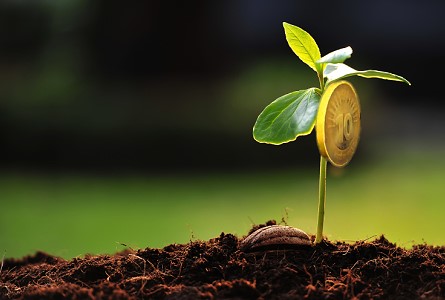By Jeff Garrett with Permission from NGC …….
The story of numismatics is compelling and we all need to do a better job spreading the word.
During the just completed convention in Dallas the ANA Board of Governors conducted a weekend strategic planning meeting. Many topics were discussed on how to make the ANA better and to define a plan to implement its many targeted missions. One of the missions identified was the need to grow the hobby. The ANA does a great job providing educational opportunities for its membership. It also conducts world class conventions. After some discussion, board members realized that not enough is being done to attract people to the hobby in the first place. This is critical for the future of our hobby.
 No one should take for granted that new people will become interested in collecting rare coins. The average age of the ANA membership is 59 years old and rising. This is not a terribly attractive demographic for growth. One only needs to look at what has happened to the interest in stamp collecting to become alarmed. The average age of stamp collectors is even higher, and that collecting field has shrunk considerably over the last two decades. At one time, stamp collecting was extremely popular. The value of rare stamps also reflects this lack of activity. Only stamps at the very top end of the market have held their values. On the other hand, rare coin prices have soared.
No one should take for granted that new people will become interested in collecting rare coins. The average age of the ANA membership is 59 years old and rising. This is not a terribly attractive demographic for growth. One only needs to look at what has happened to the interest in stamp collecting to become alarmed. The average age of stamp collectors is even higher, and that collecting field has shrunk considerably over the last two decades. At one time, stamp collecting was extremely popular. The value of rare stamps also reflects this lack of activity. Only stamps at the very top end of the market have held their values. On the other hand, rare coin prices have soared.
Many are concerned about the lack of collecting interest in young people these days. Most are consumed by some sort of electronic media and getting their attention is much harder. There is no doubt that social media is impacting the behavior of young people in very significant ways. I have a teenage daughter and she seems tethered to her phone continually. I’m sure anyone with children will express the same observation. The numismatic community cannot beat social media, so they will have to join them. In the future any strategy to attract young people will need to include all forms of electronic media. The Internet is an obvious channel, but no stones should be left unturned in our battle for the attention of young people who may one day become coin collectors. The ANA has committed considerable resources toward this effort. Others in the hobby will need to follow suit. This includes collectors, dealers and anyone with a stake in seeing our hobby grow.
Some may ask why this is so important. Anyone who collects rare coins has probably made a significant financial investment. The financial return on this investment may not be the primary reason for buying rare coins, but everyone would like to make money when their collection is finally sold. For these investments to be profitable, the size of the market is crucial. If the industry were to shrink considerably, as has been the case with stamp collecting, there will be fewer buyers for your coins when it comes time to sell. The opposite is true if the hobby grows. There will be stiff competition and prices will rise. Sometimes it is hard to think about the long term when it comes to our hobby. We all spend so much time going about our daily activities; we take the future for granted.
This all brings us back to original question, how do we grow the hobby? The milk industry has the “Got Milk” campaign to promote the use of its products. A national advertising campaign to promote rare coins would be cost prohibitive. The numismatic community will need to be more creative finding ways to reach those who might find rare coins appealing. One recent effort to promote coin collecting that I have been involved with is the new numismatic exhibit at the Smithsonian Institution. NGC and others have contributed over $1 million to fund a planned exhibit for 2015. The new gallery will be over 1,000 square feet and will feature displays that will encourage people to collect rare coins. Over 4.6 million people visit the museum each year, many of which are kids. There are plans to include electronic media in the exhibit as well.
Other ideas are to work with those who sell coins through mass media. These coin companies spend millions of dollars each year trying to entice consumers to purchase rare coins. However, not enough effort is given to change the one time buyers into rare coin collectors. The more educational material available to these buyers, the better the chances they will stick with our hobby. The story of numismatics is compelling and we all need to do a better job spreading the word.
There is no doubt that the Internet is a powerful force in numismatics. The challenge will be to use this tool to attract new collectors and not just service the collectors we already have. eBay is a great example. In recent months they have made a renewed effort to feature rare coins as a prominent auction category on their site. They have also made changes to protect consumers of counterfeit numismatic items. They realized that if someone new to the hobby buys a counterfeit coin on eBay, it ruins the relationship with that customer and turns them off to coin collecting in general. Many other companies also spend considerable resources trying to grow the hobby using the Internet as a tool. One of the ANA’s biggest capital spending projects for the next year is to re-invent its website. Hopefully, the new and improved website will be an important way for the ANA and the hobby to grow.
For the ANA, the numismatic industry, collectors, grading services and many others, it is crucial for everyone to focus on growing our hobby. No one should take the future for granted. The world is littered with individuals and industries who failed to recognize that if you are not moving forward, you are going backwards. Nothing ever stays the same. I want those who are stakeholders in the hobby, and this includes about everyone who collects, to make a contribution to grow our hobby. The field of numismatics is wonderful, but it can always be better. We can continue to preach to the choir, but now is the time to fill the pew with new folks!
Questions about the rare coin market? Send them to [email protected].





I would maybe suggest 1st off engaging in places of faith with youth groups also as a show and tell at local schools in reference to history. One other thing when it comes to the grading is many coins were cleaned well before any grading system was made…I remember watching the tarnex commercials when I was a kid and they made it a point to talk about cleaning your coin collections…While my Dad never did My mother used it for the silver and brass decorations and I do remember using it on pennies cause it was cool to see it go from a dark brown to bright and shiny…Some of those pennies wheats included which I will never remember which ones are now worthless according to the graders.. I would suggest a special area for the graders that allows for something better then Improperly cleaned or just sent back. Maybe a seperate market even of cleaned F,VF,or AU, or Even MS. They would have their own value and grading number under a cleaned but at least they would have a value to them…I see nice coins that are listed Just improperly cleaned but no value is set to them to look up…I find that discourging to even make the investment in as they do not even come up on the POP reports.
Pendragon,
Cleaned coins still have value (unless it is something like a penny that is not worth that much when uncleaned) but they are definitely harder to value. I have heard of people washing their pennies to get rid of germs, but that is probably okay if done properly. I am planning to write something on graded coins with problems for my CoinWeek column, the Coin Analyst.
This is THE concern, isn’t it?
It’s an old one too… check out Julian Leidman and Mark Mendelson’s piece “Is the Collector Still King?” from the July 1990 Coin Dealer Newsletter if you get a chance.
I enjoyed the article about the numismatic world and how we may lose collectors in the near feature. I believe the problem is with the world we live in these days. I would love to tell people about collecting coins and post on Facebook to all my friends but then in return I just compromised my personnel collection to a risk of theft. Crime and society was totally different 30 to 40 years with the average age of the collector being around 59 there wasn’t any real threat of someone trying to steal your own possessions. I believe the economy is to blame as well but we must try and get already known dealers, grading companies, and associations to start advertising. Technology is opening many doors through eBay sales and I believe that this market is going to become very successful due to precious metals demand and the quality of new coins that are hitting the market. Coins are like a history lesson we should try and get the word out to schools and communities. Most people are very interested in this hobby but they just don’t know anything about it. Hopefully there will be many coins that will be passed down to relatives that will then want to know what this collecting thing is all about. One of my friends inherited his grandfather’s collection and is now very passionate about continuing the collection for his son. Great Article!!!